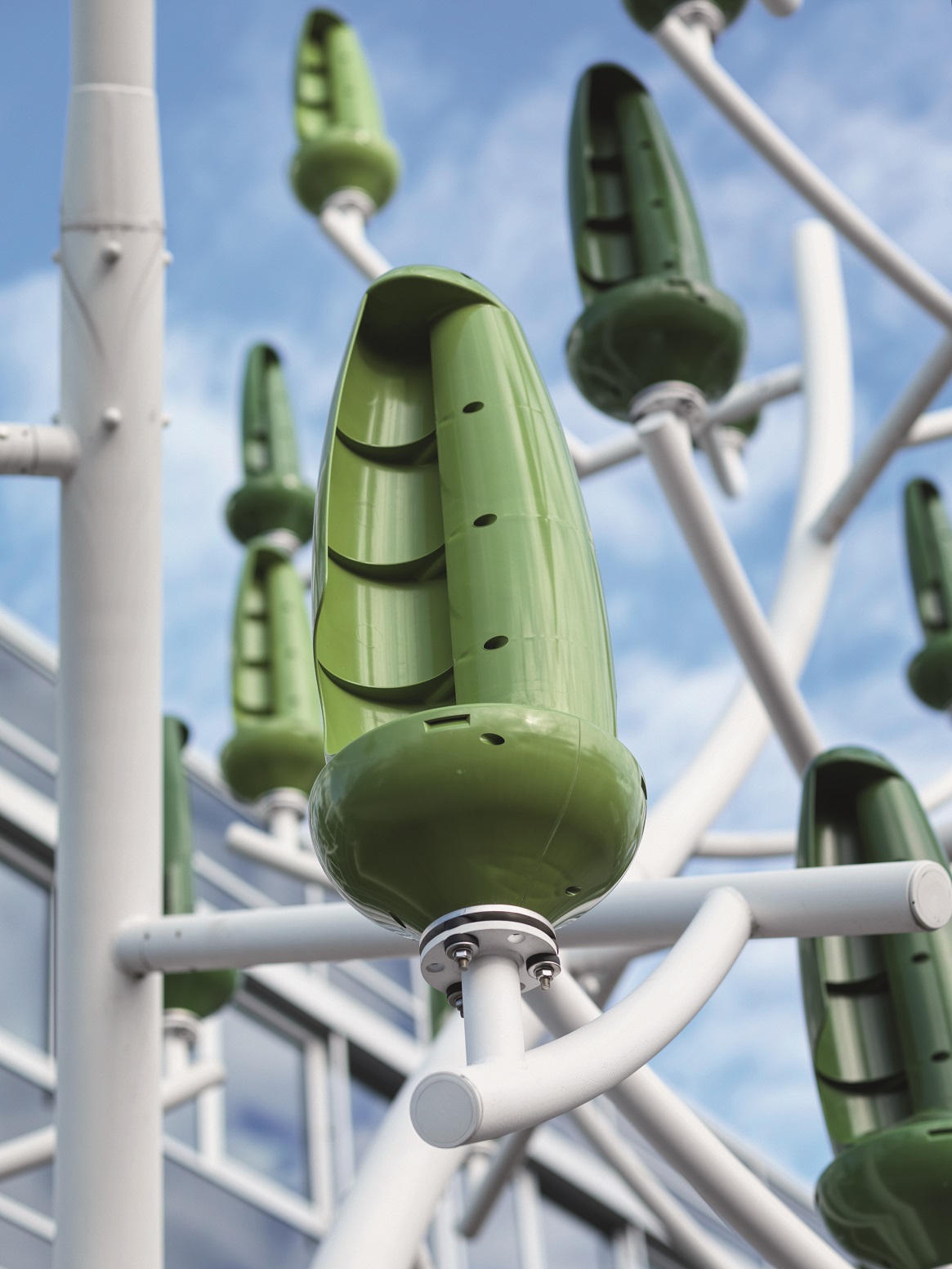Energy from the wind tree
From a distance it looks like a tree, but on closer inspection it turns out to be an innovative small-scale power plant: a wind tree that delivers sustainable electricity at Endress+Hauser in Gerlingen, Germany.

The wind tree is nothing more than a small wind power station, 9.9 meters high with a metal trunk and branches, adorned with vertical, green-colored plastic turbines that resemble large leaves from afar. Driven only by wind, the 54 approximately 85-centimeterhigh mini turbines rotate to generate electricity. With an electrical power of 4,000 watts, the turbines produce around 3,200 kilowatt hours of electricity per year, enough to supply a one-person household. Compared to a large wind turbine, that doesn’t seem like much. But this small power plant offers key advantages. The small dimensions make it suitable for installation in urban environments, for example. The leaf-shaped turbines can also utilize any form of wind, even turbulent air flows that often occur in built-up areas. And they are nearly silent. Jérôme Michaud-Larivière, the inventor, estimates that his micro power station can operate 320 days a year in normal wind conditions, with a life cycle of 25 years.
“The wind tree is a visible sign of our commitment to handle our Eco power plant for the city: The wind tree supplies the e-vehicle charging station with electricity. The turbines work even in light winds. environment and natural resources in a responsible manner,” says Manfred Jagiella, Managing Director at Endress+ Hauser Liquid Analysis. The company has implemented a sustainable energy concept for years. As part of the expansion and modification of the facility in Gerlingen, the building systems were designed for energy efficiency from the ground up, and are optimized on a continual basis. Electric driving is now a beneficiary of the wind power station as the electricity flows directly into an innovative redox flow battery, which in turn supplies power to a charging station located in front of the building. “That means our own vehicles, as well as our visitors’ vehicles, can now operate with climate-friendly, autonomously generated energy,” says Manfred Jagiella
Canada goes green
The Endress+Hauser Group is investing 19 million euros in a new customer experience and process training center in Canada that sets itself apart by a new, completely sustainable design. The roughly 4,400-square-meter building in Burlington, Ontario is designed to draw all of its energy needs from local regenerative sources for carbon-neutral operations. “Our goal is to create an exceptional facility in all respects that will not only be sustainable on the day it opens but will still be considered as such decades from now,” explains Anthony Varga, Managing Director, Endress+Hauser Canada. Double-sided solar panels on the roof generate electricity, while a ground source heat pump supplies geothermal heat. In addition, the building is not connected to the local water supply network and the facade will be triple-glazed. The aim is to receive gold LEED (leadership in energy and environmental design) certification for sustainable building construction. The new center is scheduled to open in early 2021.
Published 04.01.2020, last updated 18.11.2022.
Dive into the world of the process industry through new exciting stories every month with our «changes» newsletter!









